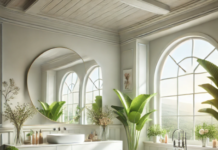Container-Friendly Garden – Running short on garden space or living in a small urban apartment should not necessarily stop you from having a thriving and beautiful garden. You can actually turn any available place into a gardening spot – from balconies and rooftops to windowsills and empty walls. Growing plants in containers provide numerous opportunities for gardeners with limited space. You can go even further and grow your own veggies and fruits and to experience the flavor and the benefits of home-grown food. With a few pots and the right plants, you can create your own container-friendly garden.

Container-friendly gardening
About container gardening…
It is a little known fact that most vegetables can actually grow pretty well in containers. Fruits offer fewer options, but you can still find suitable options. Тhe key to successful container gardening is picking the ideal plants for your small garden. Here are a couple of things you need to consider before you start with your garden:
– The first step is to pick a spot for your container garden. Vegetables thrive best in areas with windowsills. If you live in a warmer area, you can keep your fruits and veggies on the balcony or rooftop.

– The size of the container is essential. Generally, the bigger the pot, the better. Larger containers hold more soil and thus more nutrients and moisture. Get a pot that is at least 12 inches deeper and 10 inches wider. Again, it depends on the type of the greenery you are planting.
– The soil is another important aspect of container-friendly gardening. Make a safe bet and get potting mixes for containers.
– Veggies and fruits require a consistent supply of water to develop well.

If you are looking for easy to grow fruits and veggies for your container-friendly garden, you can try these plants:
1. Tomatoes
These easily raised crops are a popular choice for container gardening. Tomatoes would love a sunny windowsill or balcony and can be grown from seed or small plant. For hanging baskets and window boxes, you can select pendant varieties such as Tumbler tomatoes. Other varieties you can consider are Matt’s Wild Cheery, Jelly bean and Yellow Pear.

Container-friendly garden: Tomato
2. Carrots and radishes
Although most root veggies need more depth that you can provide indoors, you can pick miniature or round varieties that don’t root deeply. Round radishes and baby carrots will grow well in pots, pans and boxes. Pick a sunny spot, with at least 8 hours of direct sun. Fill the container with sandy potting soil and ensure it has good drainage. Fight off the fungus by watering with camomile tea.

Container-friendly garden: Radishes
3. Avocado
Avocado is another popular indoor plant, because it requires minimum efforts and produces delicious fruits. You can grow it from avocado pit, but keep in mind that it may not yield edible fruits. The alternative is to buy a dwarf avocado plant. The greenery can grow more than 10 feet. Re-pot the plant if needed by filling the container with sand and then with potting mix. Don’t forget to make drainage holes. Put your avocado in the sunniest spot you have and water regularly, but be careful not to overwater.

Container-friendly garden: Avocado
4. Lemons
You can easily grow lemons from seed and keep it indoors in well-drained pots. These plants can reach up to 20 feet in height, so you are better off getting a dwarf version such as Meyer lemon. The lemon trees need a whole lot of sun and will grow best in a room or balcony with southern exposure.

Container-friendly garden: Lemon
5. Microgreens
Microgreens are a great container growing option. You can start with a seed mix that includes a variety of tiny delicious plants such as basil, radish and dill, Swiss chard, mesclun salad greens or anything you like. Sprinkle the seeds over a shallow tray filled with potting mix and then cover with a thin layer of soil. Water the soil by using a spray bottle and put the tray on a sunny windowsill. The seeds should germinate in 3 to 5 days and the veggies will be ready to consume in 10 days.

Container-friendly garden: Microgreens

Container-friendly garden: Microgreens



























